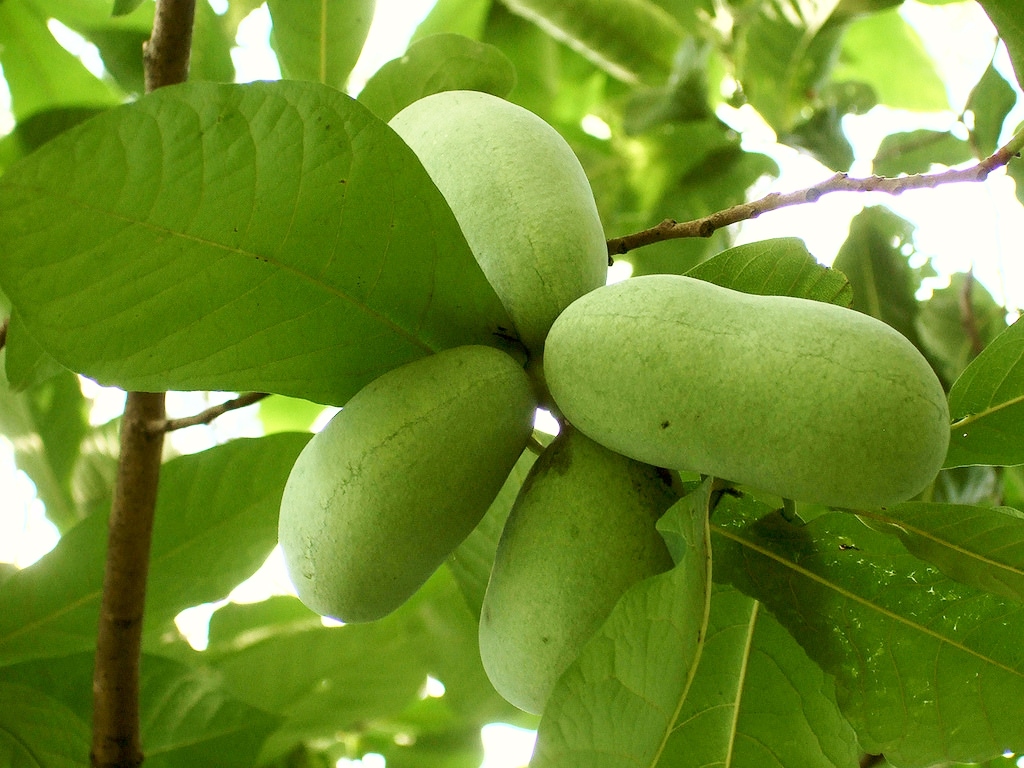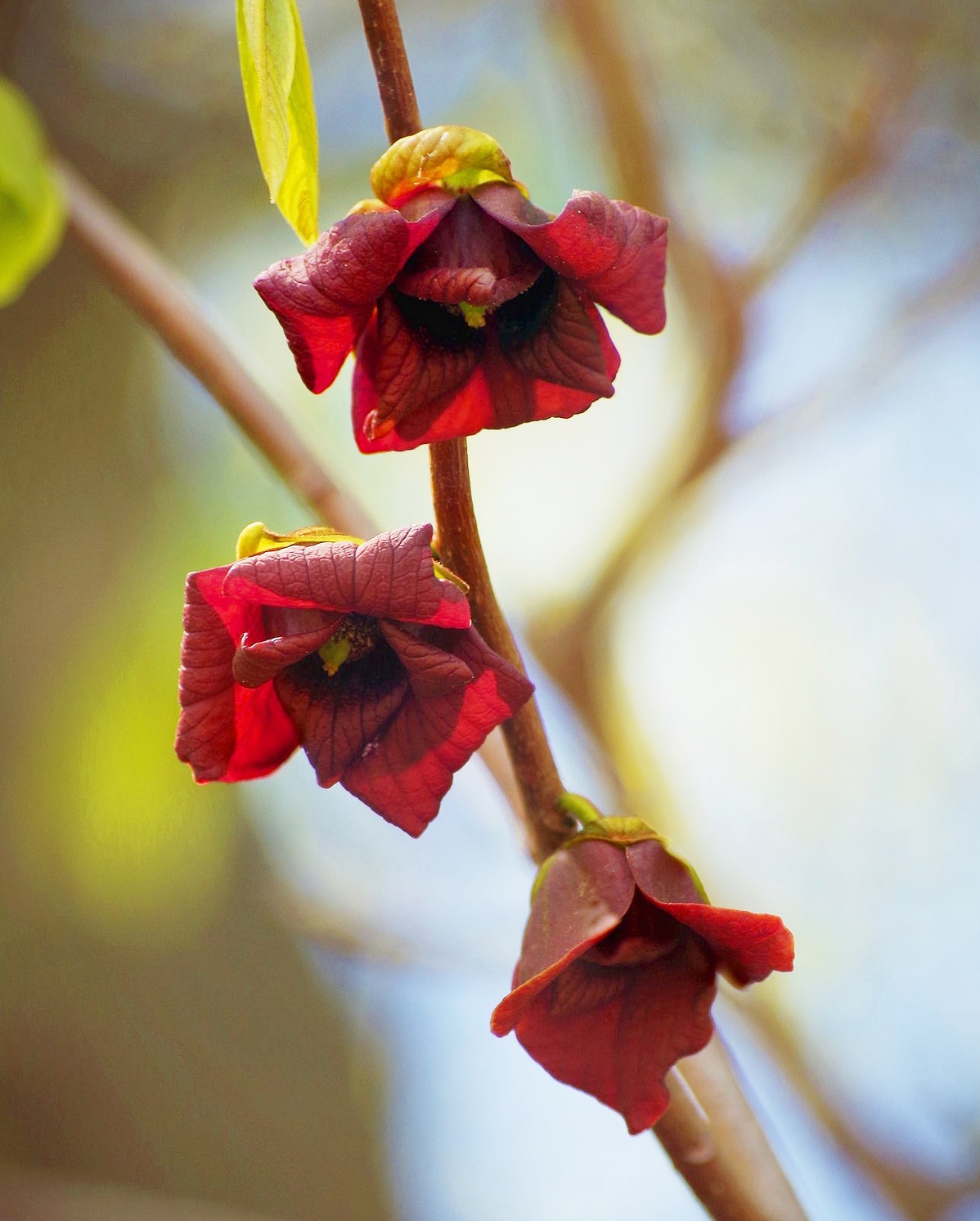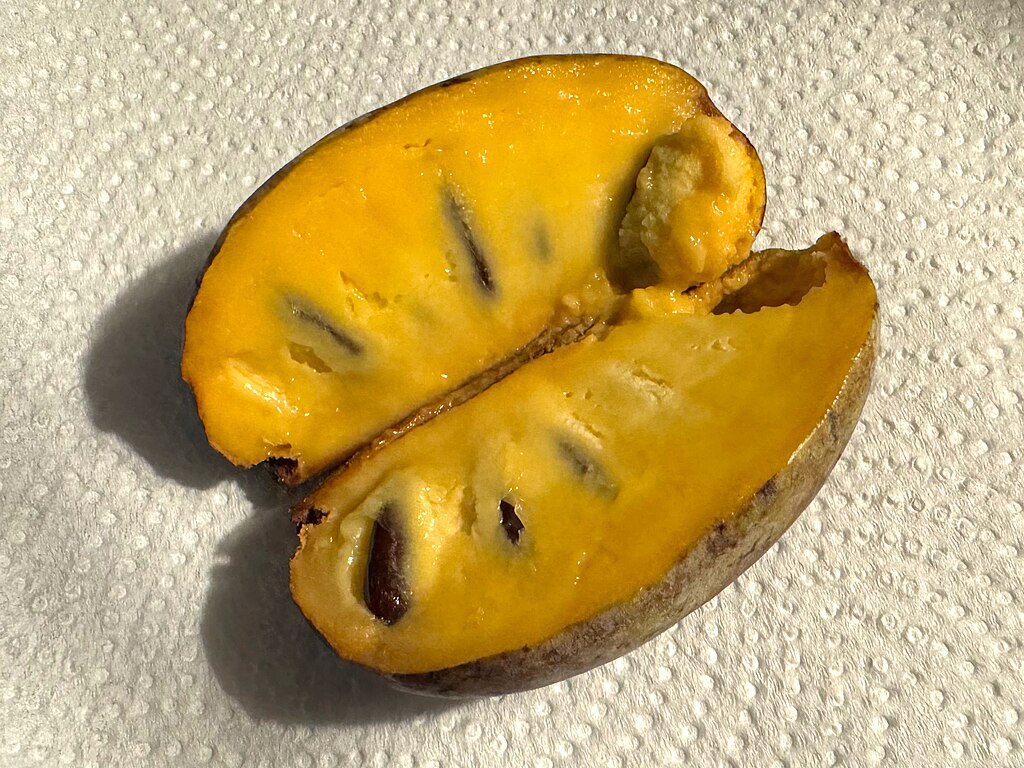The Fall and Rise of the Pawpaw
Pawpaw (Asimina triloba) is a native understory tree that thrives in moist, well-drained soils of deciduous woodlands. Although belonging to a tropical family, the pawpaw is a temperate * species that was once abundant throughout the biodiverse Carolinian Zone, which extends from south-western Ontario into the Carolinas of the United States. However, as European settlers cleared much of these Carolinian forests for agriculture, the pawpaw’s preferred habitat was greatly diminished.

Despite these challenges, the pawpaw tenaciously held on in the pockets of forest remnants and is back in the spotlight thanks to efforts of conservationists. Organizations such as Carolinian Canada highlight First Nations leadership towards the pawpaw’s restoration while celebrating the cultural significance of the tree.
The Allure of the Pawpaw
Part of what makes the pawpaw captivating is its distinctive flowers and pollination process. The maroon, bell-shaped blossoms dangle elegantly beneath the tree foliage, drawing attention with their unusual appearance. The pawpaw employs a fascinating "floral deception" strategy to attract pollinators. Rather than relying on vibrant colours or sweet fragrances, the pawpaw produces a scent similar to rotting meat. This strategy attracts carrion beetles and flies, which unwittingly become pollinators as they seek out what they believe to be their usual food source. Pawpaws rely on beetles and flies to bring them pollen from a genetically different tree to achieve pollination and fruiting. As such, two pawpaw trees need to be growing near each other for successful cross-pollination. The pawpaw's unique approach to pollination showcases the incredible adaptations plants can make to ensure their survival.

But the true allure of the pawpaw for people is its fruit! Picture this: a fruit that looks like a vibrant green mango, feels like a ripe avocado and tastes like a blend of banana, mango and melon, all wrapped up in one delicious bite. That's the pawpaw for you! The custard-like texture and tropical flavour make it a unique treat that's worth seeking out. The fruits typically ripen in late summer to early fall, and the thrill of finding a perfectly ripe pawpaw is like finding a treasure in the wild.

Enjoy the Sweet Delight of Pawpaw Pudding
There are many uses for the pawpaw fruit. It can be added to a vinegarette, a pawpaw colada, ice cream or replace banana in any sweet loaf recipe.
If you’re looking to indulge in the sweetness of pawpaw, here's a simple recipe for pawpaw pudding for you to try:
Ingredients:
- 3 ripe pawpaws, peeled and seeded
- 1 cup milk (dairy or plant-based)
- 1/2 cup sugar (adjust to taste)
- 2 tablespoons cornstarch
- 1/4 teaspoon vanilla extract
- Pinch of salt
Instructions:
- Combine the peeled and seeded pawpaw flesh with milk in a blender. Blend until smooth.
- Whisk together sugar, cornstarch and salt in a saucepan.
- Gradually add the pawpaw mixture to the saucepan, stirring continuously to avoid lumps.
- Cook over medium-low heat until the mixture thickens, stirring constantly.
- Remove from heat and stir in vanilla extract.
- Allow the pudding to cool, then refrigerate for at least two hours before serving.
This velvety pudding is a delight, combining the unique flavours of pawpaw with a creamy texture. It's the perfect dessert to share with friends and family, celebrating the wonders of Ontario's own hidden gem.
Growing Pawpaws in Your Backyard with LEAF
Whether you're a seasoned pawpaw enthusiast or a curious food adventurer, take a moment to appreciate these trees' history, resilience and ecological importance to our beautiful province.
Consider bringing a piece of this magic to your own backyard by planting pawpaw trees through LEAF! Pawpaw pairs are available during our spring season only and are sold on a first come, first served basis. Check out our Shrubs, Garden Kits and Pawpaws page to learn more. Happy pawpaw picking!
Amba is the Residential Planting Programs Assistant at LEAF.
LEAF offers a subsidized Backyard Tree Planting Program for private property. The program is supported by the City of Toronto, the Regional Municipality of York, the City of Markham, the Town of Newmarket, the Regional Municipality of Durham, the Town of Ajax, the Township of Brock, the Municipality of Clarington, the City of Oshawa, the City of Pickering, the Township of Scugog, the Town of Whitby and Ontario Power Generation.
